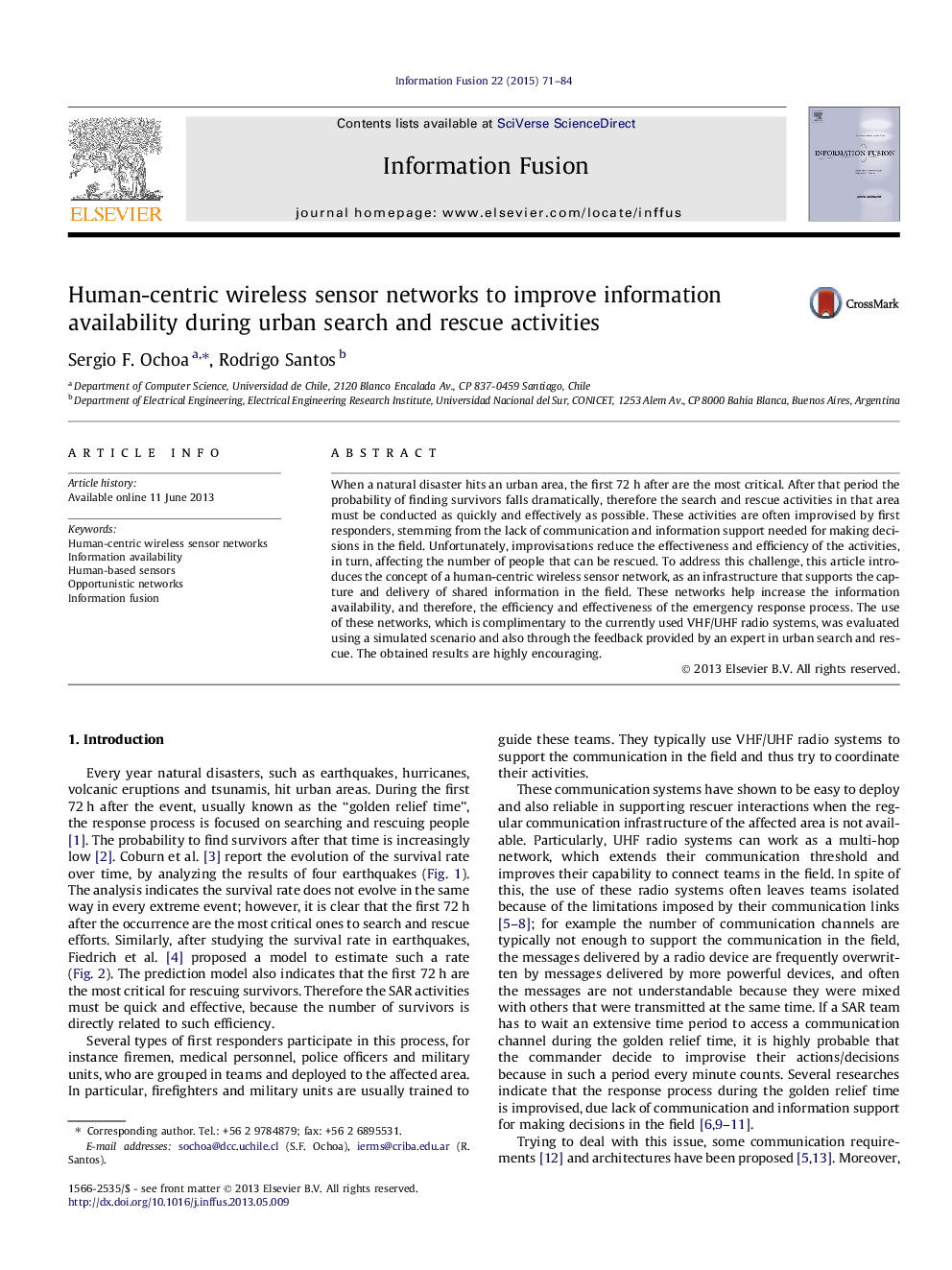| کد مقاله | کد نشریه | سال انتشار | مقاله انگلیسی | نسخه تمام متن |
|---|---|---|---|---|
| 528093 | 869509 | 2015 | 14 صفحه PDF | دانلود رایگان |
When a natural disaster hits an urban area, the first 72 h after are the most critical. After that period the probability of finding survivors falls dramatically, therefore the search and rescue activities in that area must be conducted as quickly and effectively as possible. These activities are often improvised by first responders, stemming from the lack of communication and information support needed for making decisions in the field. Unfortunately, improvisations reduce the effectiveness and efficiency of the activities, in turn, affecting the number of people that can be rescued. To address this challenge, this article introduces the concept of a human-centric wireless sensor network, as an infrastructure that supports the capture and delivery of shared information in the field. These networks help increase the information availability, and therefore, the efficiency and effectiveness of the emergency response process. The use of these networks, which is complimentary to the currently used VHF/UHF radio systems, was evaluated using a simulated scenario and also through the feedback provided by an expert in urban search and rescue. The obtained results are highly encouraging.
Journal: Information Fusion - Volume 22, March 2015, Pages 71–84
